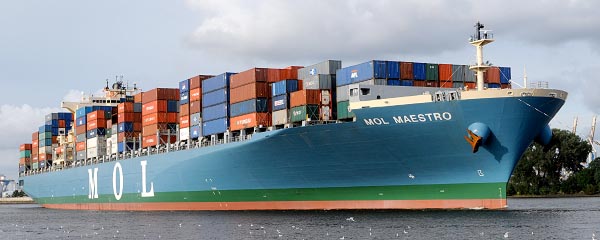Global Logistics—December 2011

Japanese Ocean Carriers Mull Merger
In a move reminiscent of Air China/Cathay Pacific’s recent joint venture cargo agreement, Japan’s three largest container lines are considering a merger to stave off rising costs and capture greater market share in the region.
MOL, NYK, and “K” Line are in ongoing discussions to consolidate operations, reports French container shipping analyst Alphaliner. The ocean carrier industry at large has been beset by economic volatility, especially as demand patterns in certain lanes and regions continue to waver. For many steamship lines, the fact that a peak shipping season never materialized in 2011 is an ominous warning of changing trade dynamics.
Carriers have recognized that surplus capacity is a problem. During the first recessionary wave in 2009, many began idling assets in an effort to reduce vessel operating costs and better reflect demand. That trend continued into 2011. But smaller operators without market share are still at a disadvantage.
None of the Japanese ocean carriers currently commands a top-three position in any of their key markets, according to Alphaliner. Through consolidation, however, MOL, NYK, and “K” Line would create the world’s fourth-largest ocean carrier—following Maersk, MSC, and CMA CGM—with a combined market share of 7.5 percent.
A Japanese “mega-line” would be the market leader on the Far East-North America trade, the second-largest carrier on the Far East-South America and Far East-Oceania routes, and third on the Asia-North Europe and intra-Far East markets.
Projecting Russia’s Fortunes
Russia’s economy has always been married to its wealth of oil and gas reserves—for better or worse. A lack of diverse domestic industries has left the country highly vulnerable to oscillating global fuel demand and price fixing. But there is one silver lining in its unrelenting reliance on “black gold”: Russia has become a center of excellence for project logistics.
Moscow-based Volga-Dnepr Group, and its airfreight subsidiary AirBridge Cargo, has a well-established presence in the heavy-lift cargo industry. And global 3PLs such as GAC (Dubai) and Militzer & Münch (Switzerland) have capitalized on the area’s oil boom to develop project logistics divisions. Militzer & Münch recently reported that its Russian project logistics business will account for more than 12 percent of total turnover in 2011—more than twice as much as last year.
While this rapid growth is largely tied to current Mideast instabilities, there is some optimism that this spike, together with growing proficiency managing project logistics moves, will be an impetus for further economic diversification and growth.
Indonesian Ports Need Improvement
As interest in Southeast Asia heats up, transportation and logistics capabilities—and shortcomings—are becoming more transparent.
Indonesia, for example, is struggling to keep pace with neighboring countries in terms of building out transportation infrastructure to accommodate swelling trade flows, according to a recent World Bank report. Export costs out of the country are considerably higher because its ports fall well below international standards. Indonesian ports are constrained to serving ocean carriers that max out at 4,000 TEUs, while Malaysia, by comparison, can accommodate 14,000-TEU steamship lines.
Logistics costs for moving product from factory to port are also prohibitive—in some cases more than one-third higher than Malaysia. The Indonesian government is working on a two-pronged plan to improve connectivity and reduce costs: first, creating a transportation system by building the necessary inland infrastructure; and second, mobilizing state-owned enterprises and increasing national logistics capacity.[ ]
Top Master Carriers for U.S. Imports
In Zepol’s latest report summarizing the U.S. trade industry in 2011 to date, Mediterranean Shipping Company ranks second on the Master Carrier list. MSC is one of the few ocean carriers that exhibited growth, posting a 17-percent increase in TEUs shipped from last year.
| Carrier | TEUs (millions)* |
| Maersk Line | 1.475 |
| MSC Mediterranean Shipping Company | 1.410 |
| APL Co. PTE Ltd. NOL Group | 1.035 |
| Evergreen Line | 1.006 |
| Hanjin Shipping Company | .878 |
| Hapag Lloyd | .858 |
| Compagnie Maritime D’Affrètement | .690 |
| Hyundai Merchant Marine | .647 |
| Orient Overseas Container Line | .625 |
| Yang Ming Marine Transport Corp. | .614 |
* Average import volume, Jan. 2011—Oct. 2011. Source: Zepol Corporation
